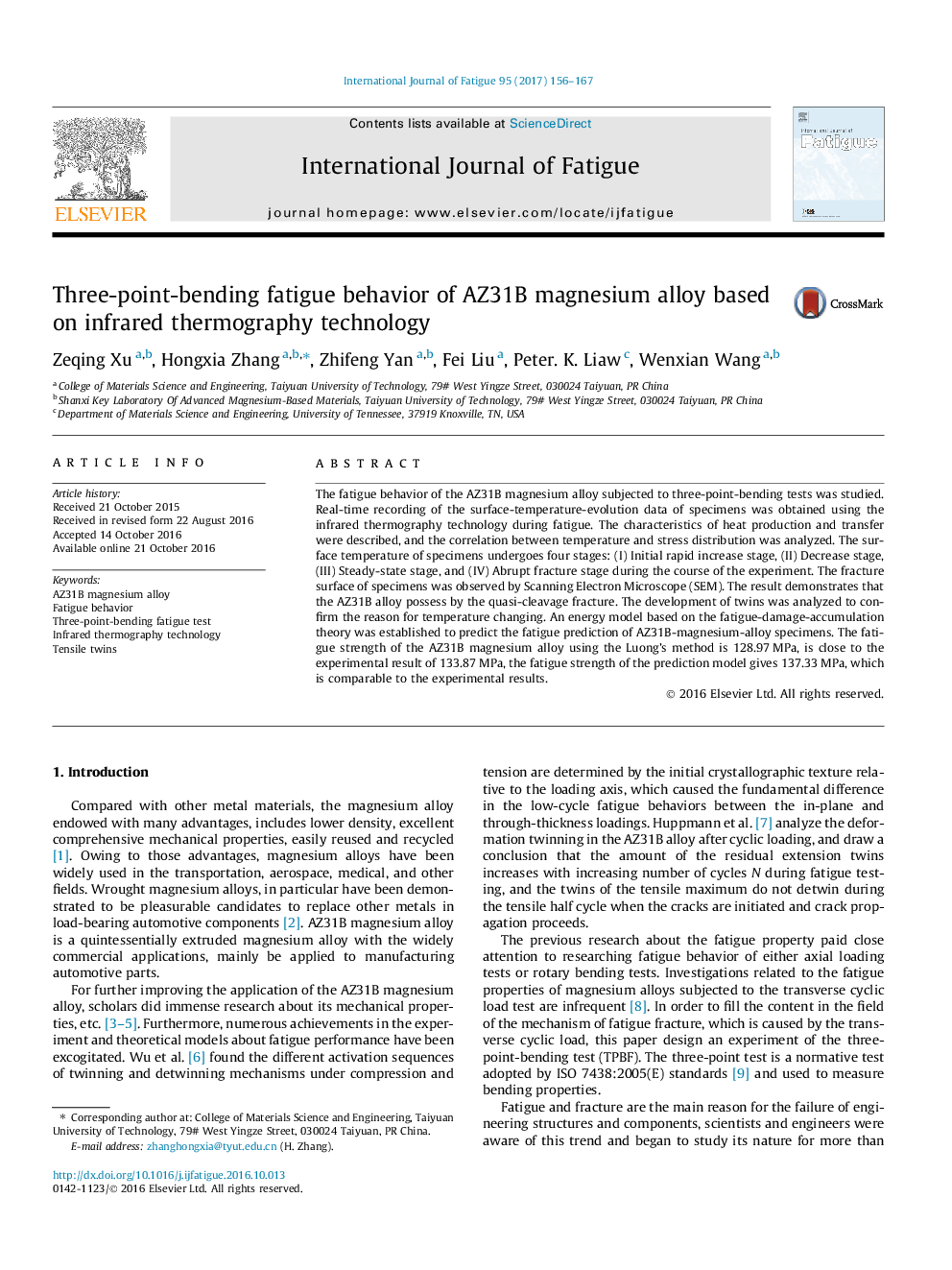| Article ID | Journal | Published Year | Pages | File Type |
|---|---|---|---|---|
| 5015334 | International Journal of Fatigue | 2017 | 12 Pages |
Abstract
The fatigue behavior of the AZ31B magnesium alloy subjected to three-point-bending tests was studied. Real-time recording of the surface-temperature-evolution data of specimens was obtained using the infrared thermography technology during fatigue. The characteristics of heat production and transfer were described, and the correlation between temperature and stress distribution was analyzed. The surface temperature of specimens undergoes four stages: (I) Initial rapid increase stage, (II) Decrease stage, (III) Steady-state stage, and (IV) Abrupt fracture stage during the course of the experiment. The fracture surface of specimens was observed by Scanning Electron Microscope (SEM). The result demonstrates that the AZ31B alloy possess by the quasi-cleavage fracture. The development of twins was analyzed to confirm the reason for temperature changing. An energy model based on the fatigue-damage-accumulation theory was established to predict the fatigue prediction of AZ31B-magnesium-alloy specimens. The fatigue strength of the AZ31B magnesium alloy using the Luong's method is 128.97Â MPa, is close to the experimental result of 133.87Â MPa, the fatigue strength of the prediction model gives 137.33Â MPa, which is comparable to the experimental results.
Related Topics
Physical Sciences and Engineering
Engineering
Mechanical Engineering
Authors
Zeqing Xu, Hongxia Zhang, Zhifeng Yan, Fei Liu, Peter. K. Liaw, Wenxian Wang,
